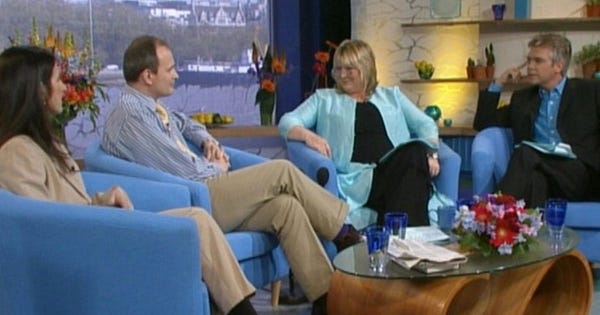In my last article, I looked at Charles and Diana Ingram’s interview after being found guilty of dishonestly winning the TV show Who Wants To Be A Millionaire.


I pulled out numerous examples of how the Ingram’s words were not convincing to me as a denial.
When breaking down someone’s words, after looking at the semantics and tactics they’ve used, it’s good to go back and look at the bigger picture again. What do you notice?
This passage from Charles gave me a lot of food for thought:
I've heard a lot of people say that this is a victimless crime. Well actually there are victims, the three defendants were the victims.
We should not have been found guilty on the evidence that was presented in court. We were found guilty on a very good story. Pieces of the jigsaw crammed in together, that weren’t… that were ill-fitting and indeed pieces were missing and they were wallpapered over.
As I mentioned in the last breakdown, Charles takes issue with the phrase “victimless crime”. He argues that there are victims, he never argues that it was a crime.
Then he produces a mangled analogy around a jigsaw. I believe the impression he is trying to land with this analogy is that in the trial the full picture or full story wasn’t told and that if it had been, then he would not have been convicted.
Only that is not what his words actually say.
Let’s break it down
We should not have been found guilty on the evidence that was presented in court.
We can read this in many ways. An innocent person will tend to find the most straightforward way to express their innocence. For example, “I didn’t cheat on the show, I should not have been found to be guilty” or “I did not cheat; therefore there is no evidence I cheated”.
The inference from what Charles says is that there are circumstances or there is evidence in which they should have been found guilty.
THE jigsaw.
We were found guilty on a very good story. Pieces of the jigsaw crammed in together, that weren’t… that were ill-fitting and indeed pieces were missing and they were wallpapered over.
Here again Charles is trying to create the picture that the whole story wasn’t presented in court. But that isn’t what he said.
If he’d used the words “A jigsaw” his analogy may work. Charles says, “THE jigsaw” i.e., the pieces that make up the truth of what happened.
If Charles had spoken about A jigsaw, we could infer he was talking about any picture put together to make him look guilty. He doesn’t do that, he is very specific; “THE jigsaw”.
Pieces of the jigsaw were crammed together and we’re ill-fitting. Not pieces that didn’t fit or didn’t belong in the jigsaw, only ones that did. And pieces were missing, there were omissions but again he isn’t claiming that any parts didn’t belong there, he’s claiming some parts that did belong there were missing.
Charles doesn’t even say that if the missing pieces were presented in court, he would be found not guilty. He gives that impression, but he never says those words.
In Charles own words here:
He doesn’t dispute there was a crime
He never says he is innocent, only that he should not have been found guilty on the evidence presented
He confirms that the evidence brought to court was all part of the true picture, that sometimes it wasn’t well put together, but he doesn’t claim any of it was fundamentally wrong
Conclusion
Charles Ingram didn’t say enough to convince me last time I looked at his words, and this only weakens what he said. At first glance it’s a firm denial, but looking at the actual words he uses it’s not robust at all.
Are there any words you’d like to take a look at? Drop them in the comments below or see the about page for contact details.



